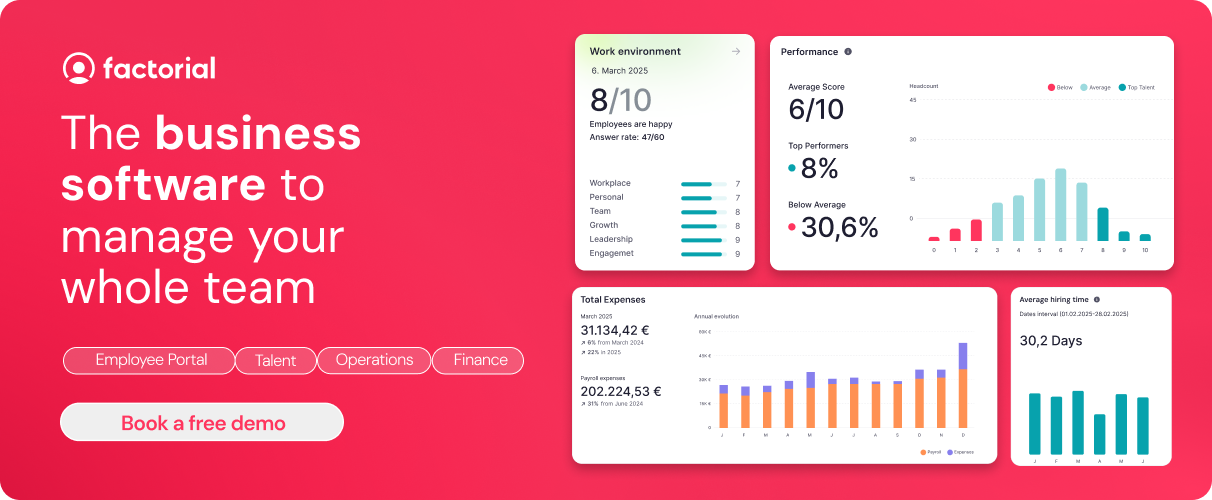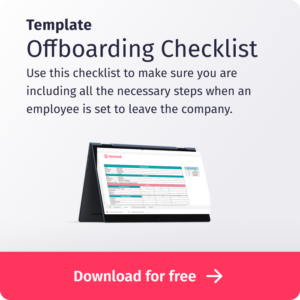The Minnesota Worker Adjustment and Retraining Notification (WARN) Act was passed to protect workers, their families, and communities during workforce changes, such as plant closings and mass layoffs. The WARN Act has many components, methods of enforcement, and best practices. HR needs to be up to date to ensure compliance with the law and that employee rights are protected. Read on to learn how to issue a WARN notice in Minnesota and everything else you need to know about the WARN Act in MN.
TABLE OF CONTENTS
- Does Minnesota have WARN Act?
- What is the Minnesota WARN Act?
- WARN notices in Minnesota
- What Triggers the WARN Act in Minnesota?
- Minnesota WARN Act Requirements
- How is the WARN Act Enforced in Minnesota?
- Offboarding your workforce during a layoff
- Offboarding solutions 🚀
Does Minnesota have WARN laws?
Minnesota does have its own version of the WARN Act, but it works similarly and in conjunction with the federal WARN Act. We will look at the key differences in this article.
Minnesota mini-WARN
In most US states the federal WARN Act applies, like Ohio, Pennsylvania, Georgia, North Carolina, Arizona, and Florida. Some states like California, New York, New Jersey, and Illinois have their own version of the WARN Act, similar to Minnesota.
What is the Minnesota WARN Act?
Minnesota’s WARN Act protects workers facing layoffs or plant closures. Employers in Minnesota are mandated to provide advance notice to employees before impending closures or layoffs. This notice helps employees by giving them time to find another job.
Note: the WARN Act is not the same as the Fair Labor Standards Act (FLSA), which is the Act that establishes guidelines for minimum wage, overtime, and unemployment benefits. The FLSA shouldn’t be confused with the Family and Medical Leave Act (FMLA) in Minnesota.
On a similar note, however, Minnesota holidays are determined both federally, and locally per the state. Check out our federal holiday calendar for an updated and complete list.
WARN notices in Minnesota
Employers covered by the Minnesota WARN Act must give advance notice to affected employees, the Minnesota Rapid Response team located at DEED – Minnesota’s Department of Employment and Economic Development, and other relevant entities. This ensures that those impacted by potential job losses are informed in a timely and transparent manner.
WARN notices in Minnesota have a 60-day advance requirement for employees facing layoffs or plant closures. If there are also union workers involved, the notification is directed to union representatives rather than individual employees. While there’s no specific standardized template for the notice, it must be in writing and include information such as the site and date of closure or layoffs, reasons for the action, whether the loss is permanent or temporary, affected job titles, unions, and the number of employees, and follow-up contact information.
According to Minnesota’s government website, any reasonable method of delivery that ensures receipt of notice at least 60 days before is acceptable.
See previously issued WARN notices for the state of Minnesota here.
Who do Minnesota employers have to give a WARN notice?
Employers covered by the act need to provide written notice to affected workers, labor unions representing these workers, and Employers must notify the Minnesota Department of Employment and Economic Development (DEED). This notice must be delivered at least 60 days before the anticipated plant closing or mass layoff. If it isn’t employers may face penalties.
Upgrade your business with next-gen Business Management Software.👇

What Triggers the WARN Act in Minnesota?
The Minnesota WARN Act is triggered by two primary events: business closings and mass layoffs.
What is a business closing in Minnesota?
Covered employers must give notice if an employment site, or one or more facilities or operating units within it, will be shut down, resulting in an employment loss for 50 or more employees during a 30-day period.
What is a mass layoff in Minnesota?
Covered employers must give notice if a mass layoff (not resulting from a business closing) will lead to an employment loss at the employment site for 500 or more employees during any 30-day period, or for 50-499 employees if they make up at least 33 percent of the employer’s active workforce.
Notice is also required if the number of employees losing their job during a 30-day period, although not meeting the business closing or mass layoff threshold, reaches the threshold level during any 90-day period.
Do you know the difference between layoffs, a reduction in force, and firing?
Minnesota WARN Law Requirements
The applicability of the Minnesota Worker Adjustment and Retraining Notification (WARN) Act is contingent on specific criteria designed to encompass employers likely to have a significant impact on the workforce.
Notable points regarding coverage include:
- Employee Threshold: Employers are subject to the WARN Act if they have 100 or more employees. Exclusions apply to employees who have worked less than six months in the last 12 months or who average less than 20 hours per week.
- Coverage of Entities: Both private, for-profit employers and private, nonprofit employers fall under the purview of the Minnesota WARN Act. Additionally, public and quasi-public entities operating in a commercial context, separately organized from regular government functions, are included.
- Exemptions: Federal, state, and local government entities providing public services are not covered by the Minnesota WARN Act. Similarly, Indian tribal governments fall outside the Act’s scope.
Understanding these coverage parameters is crucial for employers to ascertain their obligations under the Minnesota WARN Act. By recognizing the specific conditions that trigger WARN Act requirements, employers can proactively navigate compliance and ensure timely and transparent communication with affected employees and relevant entities in the event of business closings or mass layoffs.
The core focus of WARN Act requirements in Minnesota is on notification. Employers must provide advance notice before a change in employment affecting many employees.
The state of Minnesota encourages all employers to issue a WARN notice, regardless of whether they are legally required to do so by meeting the WARN act minimum employee threshold or any of the other criteria.
How is the WARN Act Enforced in Minnesota?
Enforcement of the Minnesota WARN Act is carried out through the United States District Courts. Workers, their representatives, and units of local government have the right to bring individual or class-action suits against employers believed to be in violation of the Act. The court may, at its discretion, award reasonable attorney’s fees to the prevailing party as part of the costs.
Violations of the WARN Act, including failure to adhere to notification period requirements, may result in back pay for affected employees and penalties of up to $500 per day of violation. Employers are required to settle liabilities with aggrieved employees within three weeks of closure or layoff. Failure to comply may lead to individual or class-action lawsuits in the U.S. District Court. Consult with Minnesota labor lawyers to address potential violation claims and always read the official sources before making any decisions, as laws are subject to change.
Why is the Minnesota WARN Act important?
Understanding the intricacies of the Minnesota WARN Act is essential for HR managers to navigate workforce changes compliantly and ensure the rights of employees are upheld during significant transitions. This guide covers key aspects, providing a foundation for effective compliance and transparent communication during challenging times.
Related: Compliance calendar for HR
Offboarding your workforce during a layoff
Once you’ve followed all the required steps mandated by Minnesota during plant closings and mass layoffs, it’s time to begin the offboarding process at your company. Offboarding so many employees at the same time can be a time consuming and costly process, but with the right HR software, it can be easy.
How to offboard employees with HR software
Factorial simplifies the offboarding process, streamlining tasks and ensuring a smooth transition for departing employees. With Factorial, you can efficiently manage exit procedures. Collect company assets, update access permissions, and conduct exit interviews. Offboarding software simplifies the entire process from start to finish.
Key Features for offboarding during layoffs:
1. Clear Communication: Easily communicate departure details to the departing employee, including the last day of work, return of company property, and other essential information.
2. Task Automation: Automate offboarding tasks, such as revoking system access, updating records, and notifying relevant departments, saving time and minimizing the risk of oversight.
3. Documentation and Compliance: Ensure compliance by generating necessary documentation, such as termination letters and exit surveys, helping you maintain a comprehensive record of the offboarding process.
4. Access Control: Centralize access control management, making it simple to revoke access to company systems and confidential information, safeguarding your organization’s data.
By utilizing Factorial for offboarding, HR managers can enhance efficiency, maintain compliance, and provide a positive experience for departing employees.





